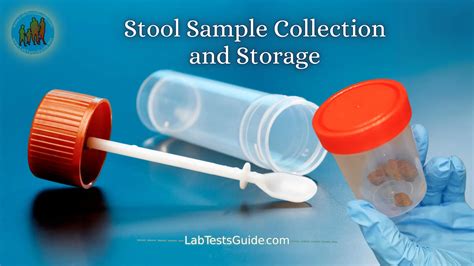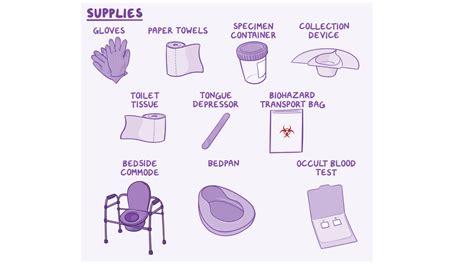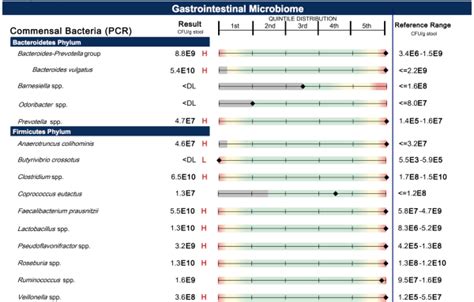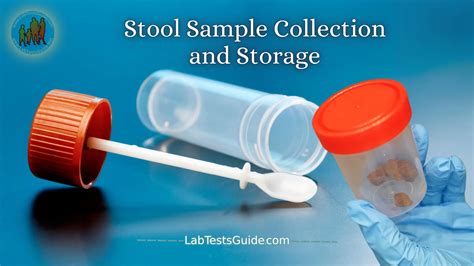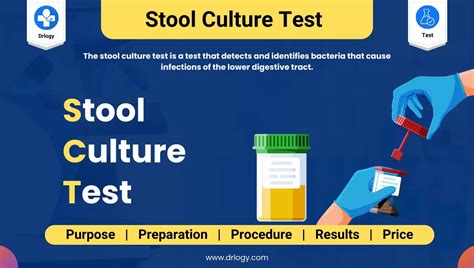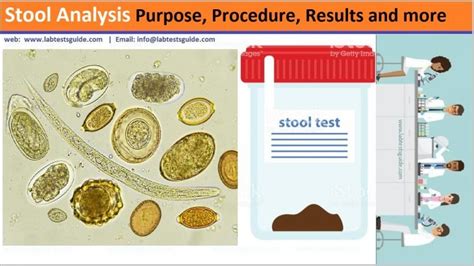The stool sample test, also known as a fecal test, is a crucial diagnostic tool used to detect various health issues, including gastrointestinal infections, inflammatory bowel disease, and even certain types of cancer. This test involves collecting a sample of stool, which is then examined in a laboratory for the presence of abnormal cells, bacteria, viruses, or other substances that could indicate a health problem. With the help of a stool sample test, healthcare professionals can diagnose and treat a range of conditions, improving patient outcomes and quality of life. In this article, we will delve into the world of stool sample tests, exploring their importance, types, and procedures, as well as providing guidance on how to prepare for and undergo the test.
The importance of stool sample tests cannot be overstated, as they provide a non-invasive and relatively painless way to diagnose and monitor various health conditions. By analyzing a stool sample, healthcare professionals can identify the presence of infectious agents, such as bacteria, viruses, or parasites, which can cause symptoms like diarrhea, abdominal pain, and weight loss. Additionally, stool sample tests can help diagnose inflammatory bowel diseases, such as Crohn's disease and ulcerative colitis, which can cause chronic inflammation and damage to the digestive tract. With the help of stool sample tests, healthcare professionals can develop effective treatment plans, reducing the risk of complications and improving patient outcomes.
Stool sample tests are also used to screen for certain types of cancer, such as colorectal cancer, which is one of the most common types of cancer worldwide. By detecting abnormal cells or blood in the stool, healthcare professionals can identify individuals who are at risk of developing colorectal cancer, allowing for early intervention and treatment. Furthermore, stool sample tests can be used to monitor the effectiveness of treatment for various health conditions, ensuring that patients receive the best possible care and management. With the increasing importance of stool sample tests, it is essential to understand the different types of tests available, their procedures, and how to prepare for them.
Types of Stool Sample Tests
There are several types of stool sample tests, each designed to detect specific health issues or substances. Some of the most common types of stool sample tests include:
* Fecal occult blood test (FOBT): This test detects the presence of blood in the stool, which can be a sign of colorectal cancer or other gastrointestinal problems.
* Fecal immunochemical test (FIT): This test detects specific proteins in the stool that are associated with colorectal cancer.
* Stool culture: This test detects the presence of infectious agents, such as bacteria, viruses, or parasites, in the stool.
* Ova and parasite exam: This test detects the presence of parasites, such as worms or protozoa, in the stool.
* Inflammatory bowel disease (IBD) panel: This test detects the presence of substances in the stool that are associated with inflammatory bowel disease.
Preparing for a Stool Sample Test
To ensure accurate results, it is essential to prepare properly for a stool sample test. Here are some tips to help you prepare:
* Follow a normal diet and bowel routine for at least 24 hours before the test.
* Avoid taking antibiotics, antacids, or other medications that can affect the test results.
* Do not use laxatives or enemas, as they can interfere with the test results.
* Collect the stool sample in a clean, dry container, and avoid contaminating it with urine, water, or other substances.
* Label the container with your name, date, and time of collection, and store it in the refrigerator until you take it to the laboratory.
Procedure for Collecting a Stool Sample
Collecting a stool sample is a relatively simple process that can be done at home or in a healthcare setting. Here are the steps to follow:
1. Wash your hands thoroughly with soap and water before collecting the stool sample.
2. Use a clean, dry container to collect the stool sample, and avoid touching the inside of the container with your hands.
3. Collect a small amount of stool, about the size of a walnut, and place it in the container.
4. If you are using a stool collection kit, follow the instructions provided with the kit.
5. Label the container with your name, date, and time of collection, and store it in the refrigerator until you take it to the laboratory.
Interpreting Stool Sample Test Results
The results of a stool sample test can provide valuable information about your health, and it is essential to understand what the results mean. Here are some tips to help you interpret your results:
* A positive result may indicate the presence of an infectious agent, such as a bacteria or virus, or an abnormality, such as blood or cancer cells.
* A negative result may indicate that no abnormality or infectious agent was detected, but it does not necessarily mean that you do not have a health problem.
* Abnormal results may require further testing or evaluation to determine the cause of the abnormality.
* It is essential to discuss your results with your healthcare professional, who can provide guidance on what the results mean and what further testing or treatment may be necessary.
Common Uses of Stool Sample Tests
Stool sample tests have a range of applications in healthcare, including:
* Diagnosing gastrointestinal infections, such as food poisoning or traveler's diarrhea.
* Monitoring the effectiveness of treatment for gastrointestinal infections.
* Screening for colorectal cancer and other types of cancer.
* Diagnosing inflammatory bowel disease, such as Crohn's disease and ulcerative colitis.
* Monitoring the effectiveness of treatment for inflammatory bowel disease.
Risks and Limitations of Stool Sample Tests
While stool sample tests are a valuable diagnostic tool, they do have some risks and limitations. Here are some of the potential risks and limitations:
* False negative results: Stool sample tests may not detect all cases of infection or abnormality, particularly if the sample is collected incorrectly or if the test is not sensitive enough.
* False positive results: Stool sample tests may detect substances or abnormalities that are not present, leading to unnecessary further testing or treatment.
* Contamination: Stool samples can be contaminated with substances that can affect the test results, such as urine, water, or other substances.
* Limited sensitivity: Stool sample tests may not be able to detect all types of infectious agents or abnormalities, particularly if the sample is collected incorrectly or if the test is not sensitive enough.
Future Developments in Stool Sample Tests
Stool sample tests are continually evolving, with new technologies and techniques being developed to improve their accuracy and sensitivity. Some of the future developments in stool sample tests include:
* Molecular testing: This involves using molecular techniques, such as PCR or DNA sequencing, to detect specific genes or genetic mutations in the stool sample.
* Next-generation sequencing: This involves using advanced sequencing technologies to analyze the genetic material in the stool sample, providing a more detailed understanding of the microbiome and any potential health risks.
* Point-of-care testing: This involves developing tests that can be performed at the point of care, such as in a doctor's office or clinic, providing rapid results and improving patient outcomes.
Conclusion and Final Thoughts
In conclusion, stool sample tests are a vital diagnostic tool that can provide valuable information about your health. By understanding the different types of stool sample tests, their procedures, and how to prepare for them, you can take an active role in maintaining your health and wellbeing. Whether you are experiencing symptoms of a gastrointestinal infection or are at risk of developing colorectal cancer, a stool sample test can provide the information you need to take control of your health. We encourage you to share your thoughts and experiences with stool sample tests in the comments below, and to take the first step towards prioritizing your health and wellbeing.
What is a stool sample test?
+
A stool sample test is a diagnostic tool used to detect various health issues, including gastrointestinal infections, inflammatory bowel disease, and certain types of cancer.
How do I prepare for a stool sample test?
+
To prepare for a stool sample test, follow a normal diet and bowel routine for at least 24 hours before the test, avoid taking antibiotics or other medications, and do not use laxatives or enemas.
What are the risks and limitations of stool sample tests?
+
Stool sample tests have some risks and limitations, including false negative or positive results, contamination, and limited sensitivity. It is essential to discuss your results with your healthcare professional to understand what they mean and what further testing or treatment may be necessary.
